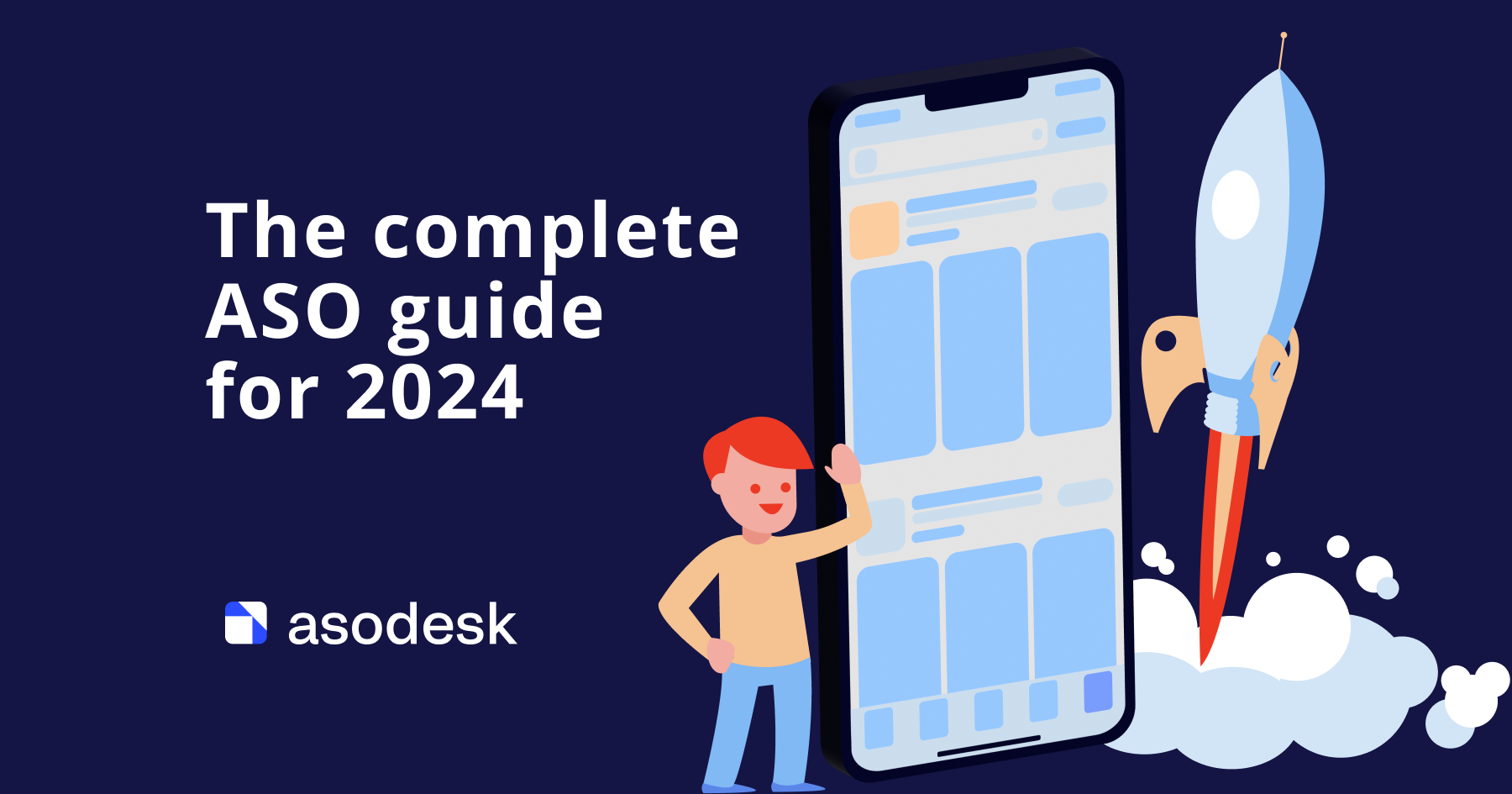How to choose countries for promotion in App Store search
When picking regions for ASO at random, you risk wasting time and money. We have created a framework that will help determine the best countries for app promotion in App Store search. Follow the instructions in the article and find new markets for growing your app business in six easy steps.
Artyom Tkachuk, ASO Expert at Asodesk, shared this analytical method at the App Promotion Summit USA 2021.
To determine which countries to choose for organic promotion, you need to consider:
1. Market size. Estimate how much organic traffic your market has in total.
2. Competition. Find out how strong your competitors are.
3. Organic growth potential. Determine if you can achieve organic growth in a certain niche.
The basis for this analysis is the meditation app Meditopia and 6 of its competitors in 15 countries. The image below shows part of the analysis. Click here to see the full framework.

Asodesk market selection framework
Step 1: Evaluate internal app metrics
Let’s evaluate the internal metrics to understand if our app is currently being promoted effectively.
- Impressions (number of impressions for search requests);
- App units (number of installs);
- Total ranked keywords (the total number of words for which the app is ranked);
- App Units/Impressions (conversion rate: the ratio of installs to app impressions).
All of these metrics can be measured using Asodesk. To get accurate data for your app, integrate the ASO Dashboard tool with App Store Connect.
ASO Dashboard will help you collect the following indicators in one table: Impressions, App Units, and App Units/Impressions for any period and country.

ASO Dashboard in Asodesk
The Organic Report shows the total number of words for which the app is ranked.
Organic Report in Asodesk
Try these tools for free at Asodesk

We compare this data with the data of competitors. Indicators in green are higher for our app. Indicators in pink are higher for our competitors.

We compare our app’s conversion rate with the CVR Benchmark for the category Health & Fitness.
You can find the conversion rates for each app category for any month in the free CVR Benchmark tool in Asodesk.

We discovered that our app is not receiving traffic in Malaysia and Singapore. In the USA, Australia, Russia, Korea, and Japan, app conversion rates are higher than those of competitors. This means that we are already successfully moving up in the search. Whereas in other countries the conversion rate is lower or equal to those of competitors.
Step 2: Estimate market size
In the second step, we are going to assess the potential market size for your app.
For this, let’s analyze the following indicators:
- Semantic core size (semantic core size for apps in a given niche);
- Daily Impressions per month (the number of daily impressions per search request per month in a given niche);
- Apple Search Ads availability (Apple Search Ads availability in a country);
- iOS active devices (active iOS devices in a selected country).
We will compare the indicators and find markets that are the easiest to enter and get organic traffic in.
Semantic core size includes all search requests for which the app can receive traffic in a given niche. Build your app’s semantic core and see how many search requests you get. Read how to do this in the Asodesk guide.
To see Daily Impressions per month, you can look at the search history and add up the daily totals over 30 days. For a simplified analysis, multiply the Daily Impressions score by 30.
Here is what we got for the Meditopia app:

We discovered that the US has the largest number of queries for which our app can rank. Users also search apps for these queries more than 3 million times per month. Also, our app has great potential in Japan, Canada, Russia, and the UK.
Step 3: Analyze competitors
We believe these two indicators show the organic promotion of our competitors:
- Ranked Keywords (the number of keywords for which the competitor is ranked);
- Estimated Downloads (approximate number of installs).
This data can be assessed using the Organic Report tool in Asodesk.

We also compare our competitors’ installs to our own. Indicators in green are higher for our app.

In the USA, UK, Canada, and Australia, we beat our competitors both in the number of installs and the number of keywords for which the app is ranked.
Step 4: Assess the potential for our app’s organic growth
It is important to determine whether our app can grow in a selected country. For this, we evaluate the following indicators:
- Coefficient (the volume of traffic that our app can take)
- Estimated monthly downloads potential.
To establish our app’s growth potential, we subtract our competitors’ installs from the total installs. This way, we find out how many installs we can get.
The coefficient is set independently by a specialist. When selecting the coefficient, it is important to take into account the number of impressions for search requests and app installs of top competitors. Based on this data, the specialist can estimate how big a market share the app can take.

For example, we learned that in the US, our app can get 10% of the market, while in France and Germany it’s 60%.
Step 5: Check app localization
It is easier to master those markets for which the app has already been adapted. So, check which countries you have already translated your app for.
You also need to consider which localizations the App Store has in a selected country. The more localizations, the more keywords we can use.

At this stage, we learned that in Russia and Spain we will be able to use three localizations at once, which means that we will have more opportunities for organic growth. Our app is not yet localized for Portugal, Brazil, Malaysia, Korea, or Singapore. To enter these markets, you need to localize the app interface.
You can view localizations for all countries in the App Store using the free App Store Localization table in Asodesk.

Step 6: Make final predictions
In the last step, it is important to take stock and predict your app’s growth. This should be based on the following parameters:
- General growth potential (general potential for organic growth);
- Install growth potential;
- CVR potential;
- Product localization is required.
Before analyzing these parameters and their data, once again analyze all the previous indicators.

For example, we marked the countries where the app has the opportunity to grow and determined in which countries we need to work on CVR and app localization. The most suitable countries for promotion are the USA, the UK, Canada, and Australia. Whereas in Japan and Russia we have no potential for growth.
So, with the help of our framework, you can analyze the main indicators of the market and learn about the potential for app’s organic growth. Asodesk tools will also help you with this analysis.
Leave a request to take our free product tour and get access to all Asodesk tools and features for seven days.
If you have any difficulties during your analysis, write to us at hello@asodesk.com or ask your question in the Slack community. Asodesk specialists would be happy to help you out.











